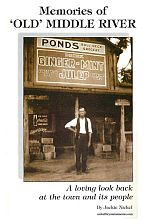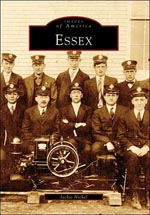Maryland Archives: A State Treasure
By Jackie Nickel
Several weeks ago when I received a call from a member of the Roth family of Essex suggesting that I might be their distant cousin, I had not the slightest interest in genealogy. Now, thanks to their encouragement and careful coaching, I’m hooked. For me, it’s not so much documenting generat ions of ancestry, but putting together pieces of my grandparents’ lives and, importantly, finding the burial place of my great grandmother. My research so far has been like dogged detective work, scraping from public records and comparing notes with other family members. It’s been far from scientific and some of what I have found has been pure luck.
Last week, after a couple of false starts, I finally got to visit the Maryland State Archives in Annapolis. The drive is an easy one, across the Key Bridge to Route 97 and over to Route 50, the Rowe Blvd. exit. The beautiful building is on your left on Rowe Blvd., a few blocks before the State House, across from the stadium. There’s no big sign, just “Maryland State Archives” carved in the concrete above the door. Inside are all kinds of records imaginable: birth and death, marriage, military, naturalization, tax lists, land records, census, probate and much more.
Like the Maryland Historical Society, you must sign in and check your purse before you enter to ensure no one smuggles out valuable documents. You are assigned a locker and given the key on chain with a tag indicating your desk number. That desk will serve as your base of operations. as you roam the archives. Although the personnel is friendly and helpful, don’t expect them to be able to spend too much time with you. They are very busy retrieving documents and showing patrons how to use viewers and copiers. During my visit, they spent as much time as they could trying to unjam a file cabinet drawer for me but to no avail. But they will lead you in the right direction to find what you seek.
I was looking for death records and hoping to get a copy of my great grandmother’s death certificate, including notation of the cemetery where she was interred. I had narrowed down the time of her death to between 1910 and 1914 so I asked for Baltimore City death records for those years and was shown to the proper microfilm drawer. Once I got the hang of the projection machine I reeled swiftly through the records which are listed alphabetically by year. No Mary Nickel. I went back through them again but still no luck. I then remembered what one of my new-found cousins told me, that most of Highlandtown and Canton was considered Baltimore County early in the century, so I found the county death index in another drawer and got to work. Work it was.
The county deaths were recorded on little cards, not lists like the city’s. The microfilm of those cards read like inkblots, blurred to the point of distortion. I strained my eyes until I had a headache, guessing which names began with N. It was impossible. I put the film back in the tray for the attendants to file and walked around the library. It is the most beautiful room, with exposed brick walls and natural light filtering in from an open balcony. A baby grand piano seems suspended on a platform above the service desk and I can just imagine the wonderful government receptions held in that room.
I watched other patrons put in request slips for old volumes of information at the desk then wait at their own assigned desks for delivery. Some of the books were wrapped in parchment paper and seemed to be hundreds of years old. One can only imagine the history within those pages. I couldn’t help but think that this new archives facility is a great and wise use of taxpayers’ money. But it seemed my mission there would not be accomplished on this particular November day.
As I mentioned my discouragement to another visitor and described the trouble I had deciphering the county death cards, she advised me to try reading them on a viewer in another part of the room. The machines there are newer and brighter, she said. So in a last ditch attempt, I retrieved the film once again and began reeling and scanning. In 1911, I could just about differentiate the “Ns”. I could even make out the name Nicodemus, so I scrolled back to where I judged Nickel might be, looking for anything with the vague shape of the name or with six letters. Only one was a possibility and I strained my eyes to try to make “Mary Nickel” out of it. I sighed and leaned back in my chair and as I put distance between myself and the machine, the words seemed to take shape. It was Mary Nickel and the date underneath was Sept. 9, 1911, I figured out after more scrutiny.
I was overjoyed and dashed to the service desk to put in a request for a copy of the death certificate to be taken from the original on file (you can make your own copy from the microfilm version if you wish). The attendant asked me to wait at my desk. After what seemed like hours but was actually only about 15 minutes, he walked over to me with a folder. Inside was a copy of a death certificate which might or might not be my great grandmother’s. I nervously opened it and smiled when I saw the place of death was the address on S. Clinton St. where I knew she had lived. Her maiden name was there and the cause of her death, some kind of heart ailment; she was just 67. A tear or two trickled down my cheek as I realized she was just ten years older than I when she died. The name of the undertaker who removed her body, however, brought a smile: John Digman. How appropriate. He removed her body to an address on Eastern Ave. across from Patterson Park that I later found out (thanks to the nice people at Sacred Heart of Jesus Cemetery) was a Polish funeral home, Fialkowski’s. But the name of her burial place was not noted. I sighed again, and committed to a cemetery by cemetery search.
Death certificate in hand I headed home, promising to come back again to enjoy the surroundings and dig in another area of family history. For the next several days I called and visited a lot of cemeteries where my Mary Nickel could be buried. I started with the Catholic ones on German Hill Rd., then the Lutheran ones and finally Baltimore Cemetery and others in the city. No Mary Nickel. Some caretakers and personnel were very nice and helpful, a few acted like they didn’t want to be bothered and told me to send a written request. I even called the Maryland Funeral Directors Assn. to find out where the Fialkowski funeral home records are kept. No reply to date. And still no Mary Nickel. But I know I’m very close to finding her and when I do it will be with armfuls of Christmas flowers for her grave.



